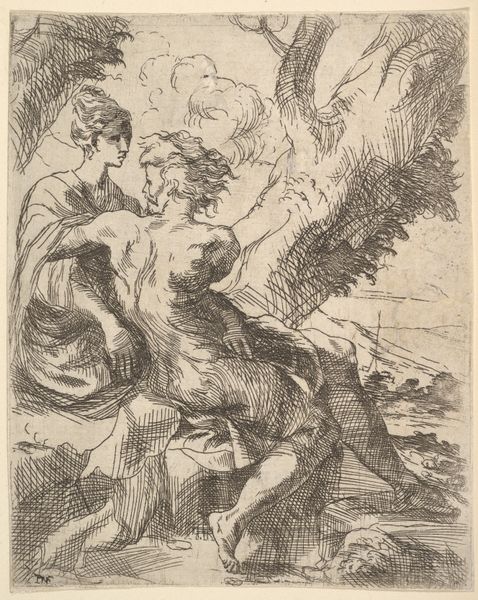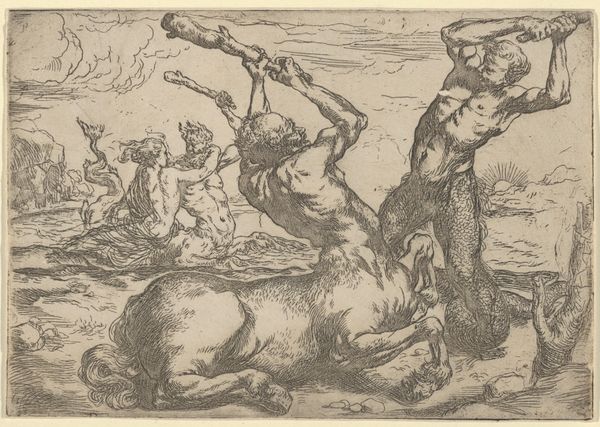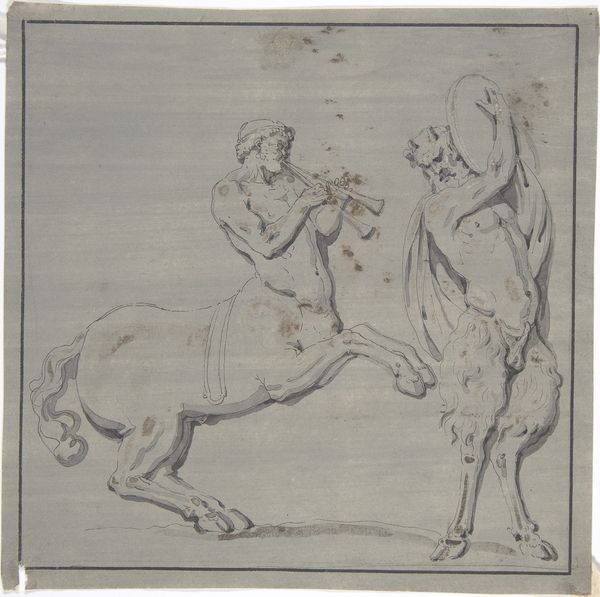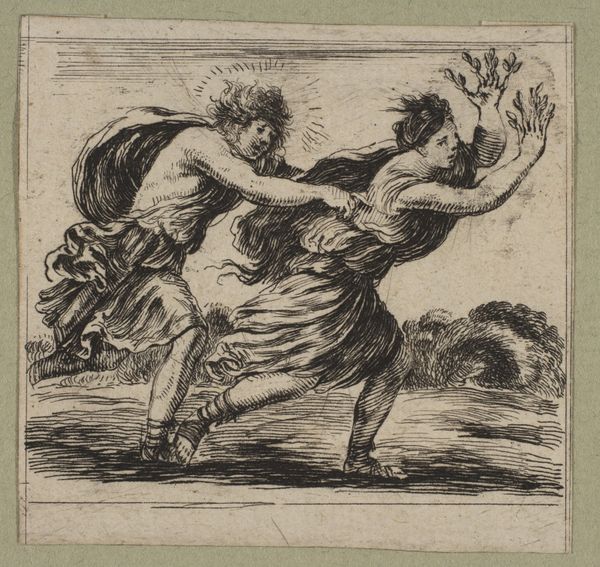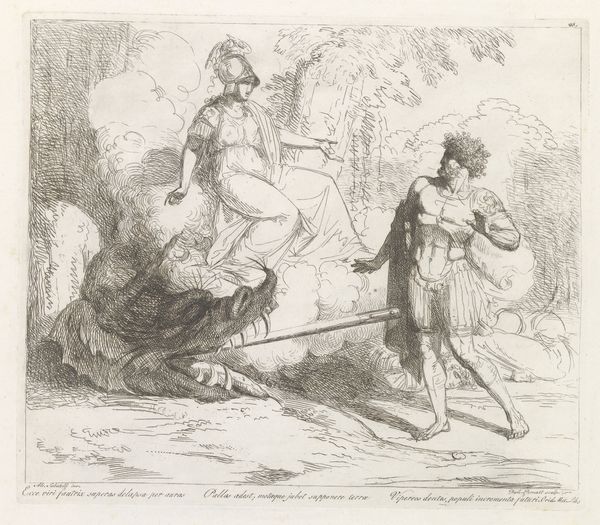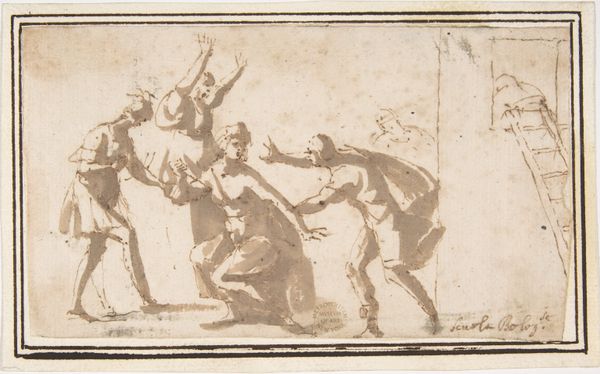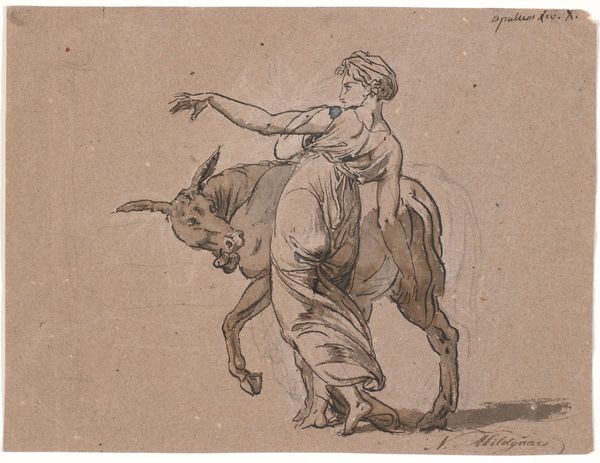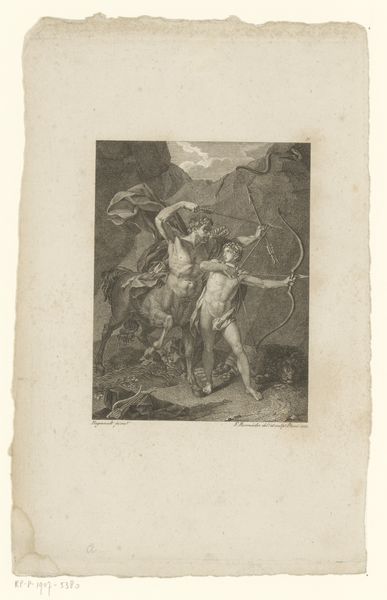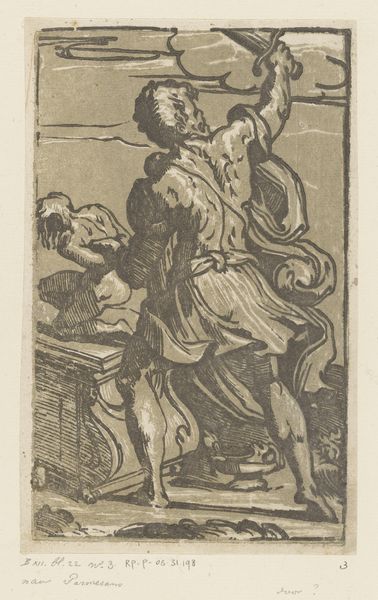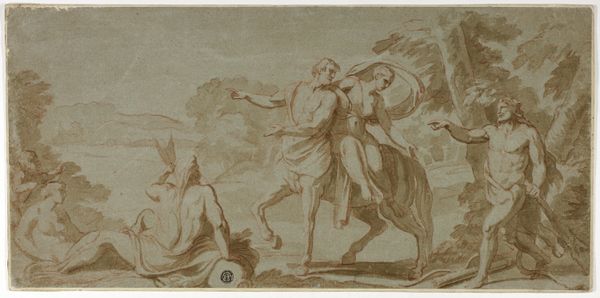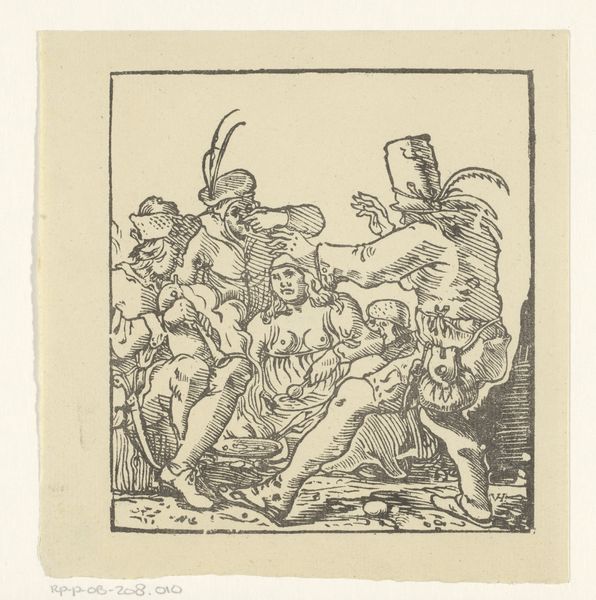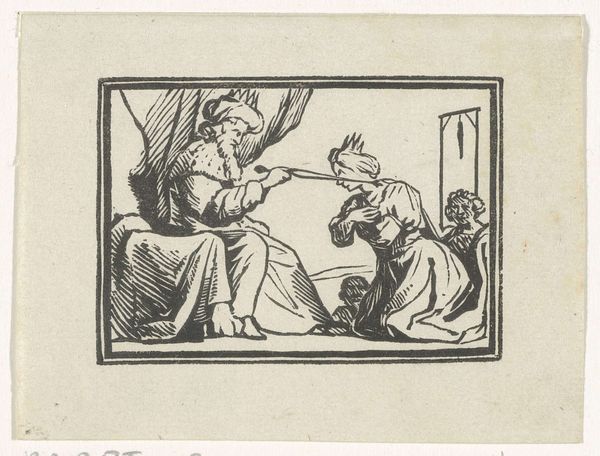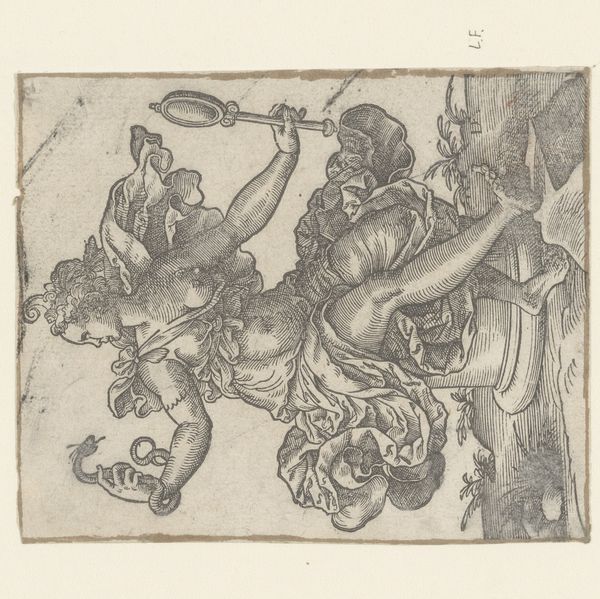
Plate 20: a soldier in profile galloping to the right holding a lance in his right hand, followed by another horseman behind, from 'Various figures and doodles' (Diverses figures et griffonnemens) 1643 - 1648
0:00
0:00
drawing, print, etching
#
drawing
#
weapon
#
baroque
# print
#
etching
#
landscape
#
figuration
#
romanesque
#
soldier
#
horse
#
history-painting
Dimensions: Sheet: 2 3/16 x 2 5/16 in. (5.5 x 5.8 cm) Plate: 2 1/16 x 2 3/16 in. (5.2 x 5.6 cm)
Copyright: Public Domain
Editor: So, we’re looking at Stefano della Bella’s “Plate 20: a soldier in profile…” from the mid-17th century, an etching. It's very detailed; you can almost feel the movement of the horse. I am struck by how detailed yet gestural the image seems to be. How do you read the means of its making? Curator: Consider the context: the accessibility of printed images grew exponentially at this time, allowing for broader consumption. Note how the etching technique, with its linear focus and repeatable nature, democratized image-making, moving it away from singular, artisanal crafts. Editor: That makes sense. So the *process* of etching allowed for more images, making it more accessible. But the image itself— the soldier, the horn blower—what do they mean in light of the work's means of production? Curator: Think about who is commissioning and consuming these images. Military leaders and nobility sought validation through representations of power and skill, but broader audiences consumed such images for entertainment or aspiration. The choice of subject aligns with a societal glorification of militaristic prowess fueled through visual dissemination. Who has access to such skills to produce these types of images? Editor: It’s interesting how the very technique of etching allows for propaganda. In a way, by focusing on the materiality of printmaking, the artwork exposes its own political nature. Curator: Precisely. The "doodles," as the title suggests, imply an immediacy and spontaneity, yet each line is deliberately etched. The interplay between the casual and the crafted reveals the complex socio-economic underpinnings of image production. Editor: This has been eye-opening. I will definitely think more about material conditions when analyzing art. Curator: And consider always who benefits, both within and outside the frame of the work itself.
Comments
No comments
Be the first to comment and join the conversation on the ultimate creative platform.
